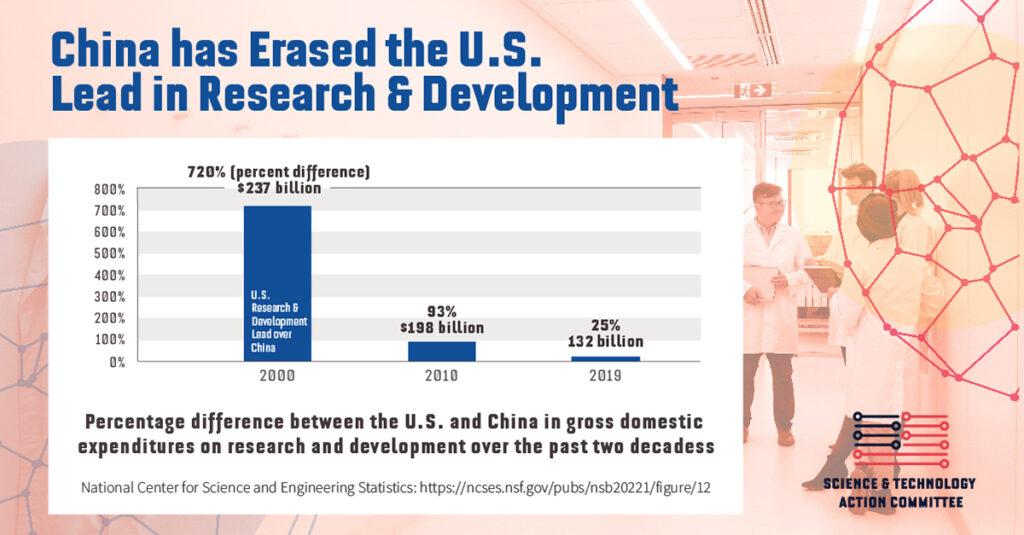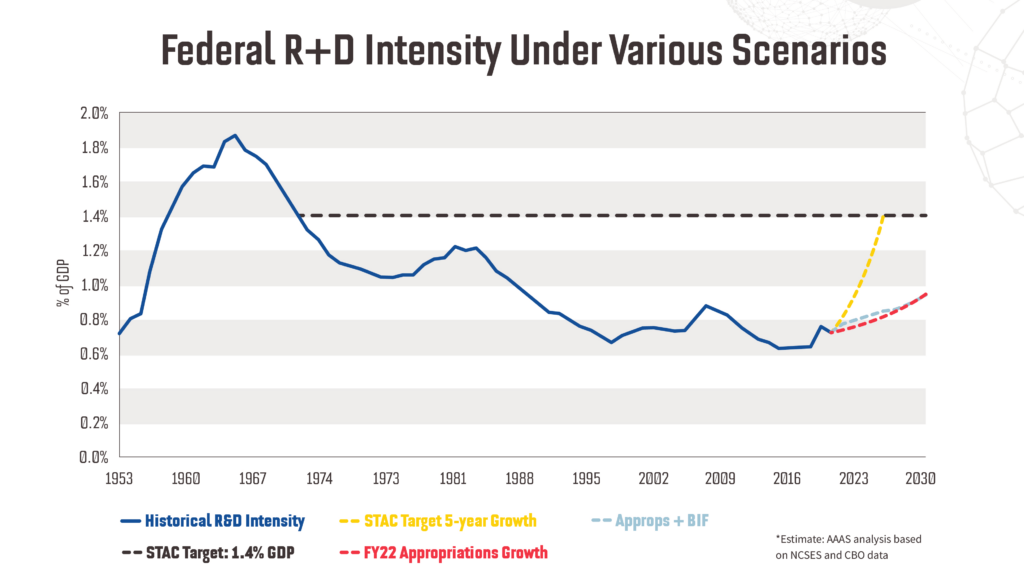The U.S. risks falling behind if it doesn’t prioritize federal investment in research and development
The Risk
If the U.S. doesn’t bolster federal spending on research and development, it will not be ready to meet the challenges of the 21st century — climate change, the next pandemic and more. Failing to boost investment will cede global leadership on science and technology to competing countries, including China.
The Urgency
While other nations are increasing their spending on research and development, the U.S. has stalled.
- In 1964, at the peak of the space race, federal spending on science and technology made up 1.9% of GDP. Today, it’s just 0.7%.
- In the U.S., the share of global research and development spending performed by all institutions — all levels of government, higher education and businesses — declined from 29% in 2010 to 27% in 2019. In contrast, China’s share increased from 15% to 22% during the same period.
- China is on track to overtake the U.S. in total R&D spending by 2030.

The Opportunity
The federal government has the chance to build on the success of last year’s bipartisan Infrastructure Investment and Job Act by passing a budget that prioritizes science and technology.
- There is already have a blueprint: 2022 funding proposals include provisions that have already been carefully considered and enjoy bipartisan support. Learn more: Read our briefing paper on a roadmap for science funding.
- Our nation’s leaders are in the process of finalizing a plan that will provide financial incentives to semiconductor manufacturers that locate manufacturing facilities in the U.S., a necessity to avert a future chip shortage.
What’s Next
As U.S. leaders develop a federal budget for the next fiscal year, it’s critical they substantially increase investment in research and development.
- See who has endorsed the Science & Technology Action Plan.
- Endorse the Action Plan.
- Read the Action Plan.

Join STAC for a Virtual Event on March 31. Click Image to Register.

